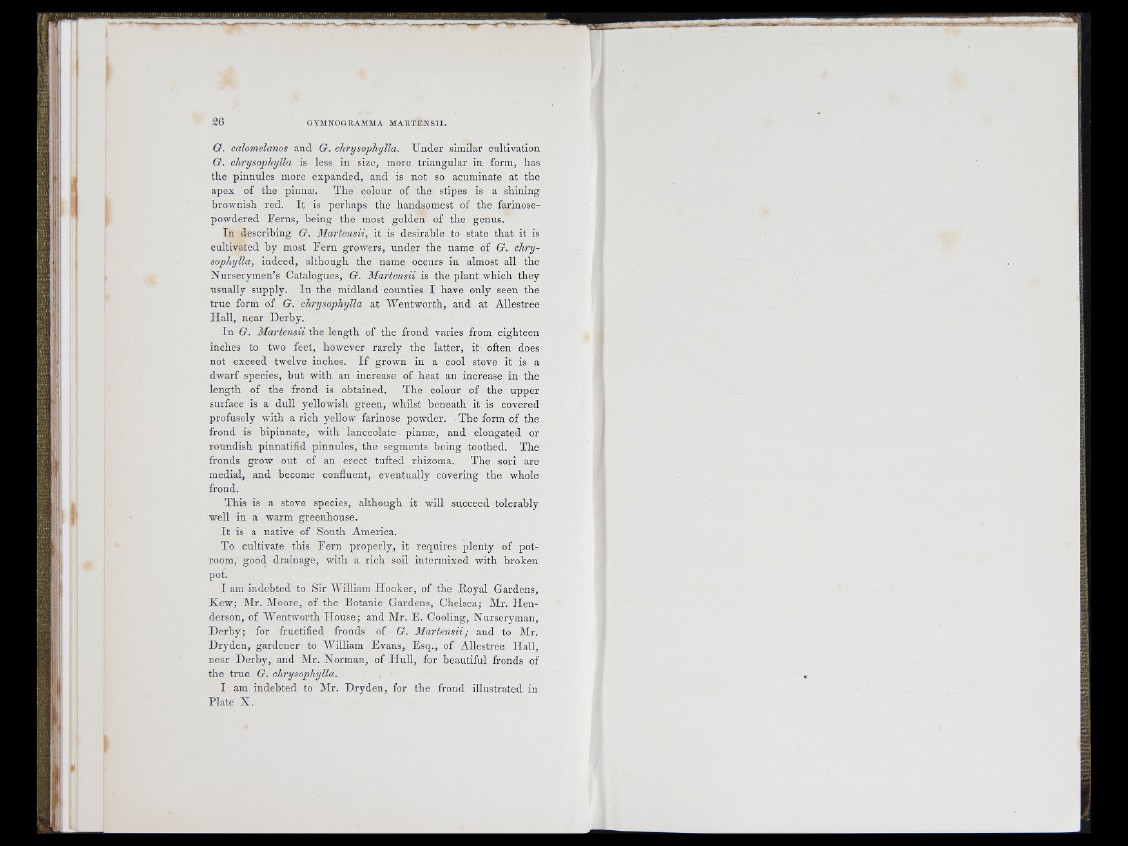
G. calomelanos and G. chrysophylla. U n d e r similar cultivation
G. chrysophylla is less in size, more trian g u la r in form, lias
the pinnules more expanded, and is not so acuminate at the
apex of the pimiie. The colour of the stipes is a shining
brownish red. I t is perhaps the handsomest of the farinose-
powdered F e rn s, being the most golden of the genus.
In describing G. Martensii, it is desirable to state th a t it is
cultivated by most F e rn groivers, u n d e r the name of G. chrysophylla,
indeed, although the name occurs in almost all the
Nurse rym en ’s Catalogues, G. M artensii is the plant ivhich they
usually supply. In the midland counties I have only seen the
tru e form of G. chrysophylla at Wentworth, and at Allestree
H a ll, near Derby.
I n G. Martensii the length of the frond varies from eighteen
inches to two feet, however ra re ly the la tte r, it often does
not exceed twelve inches. I f grown in a cool stove it is a
dwarf species, b u t with an increase of he a t an increase in the
length of the frond is obtained. The colour of the u p p e r
surface is a dull yellowish green, whilst beneath it is covered
profusely with a rich yellow farinose powder. The form of the
frond is hipinnate, with lanceolate pinnse, and elongated or
roundish pinnatifid pinnules, the segments being toothed. The
fronds grow out of an e rect tufted rhizoma. T h e sori are
medial, and become confluent, eventually covering th e whole
frond.
This is a stove species, although it will succeed tolerably
well in a warm greenhouse.
I t is a native of South America.
To cultivate this F e rn p roperly, it requires plenty of pot-
room, good drainage, with a rich soil intermixed with broken
pot.
I am indebted to Sir William Ho o k e r, of the Royal Gardens,
K ew ; Mr. Moore, of the Botanic Gardens, Chelsea; Mr. H e n derson,
of Wen two rth House; and Mr. E . Cooling, Nurseryman,
D e rb y ; for fructified fronds of G. M a r te n s ii; and to Mr.
D ry d en , gardener to William E vans, E sq ., of Allestree H a ll,
near D e rb y , and Mr. Norman, of H u ll, for beautiful fronds of
the tru e G. chrysophylla.
I am indeb ted to Mr. D ry d e n , for th e frond illustrated in
Pla te X .